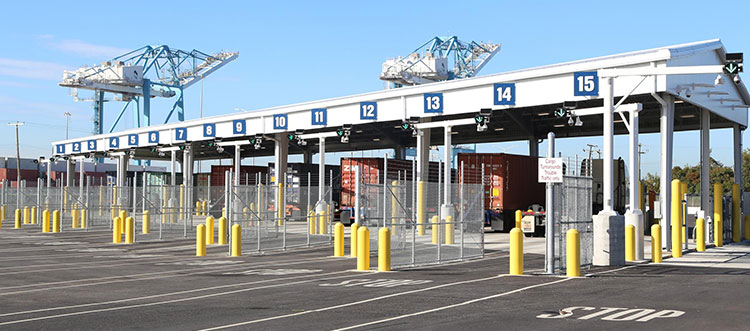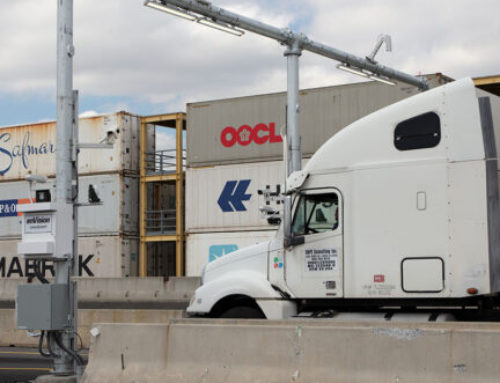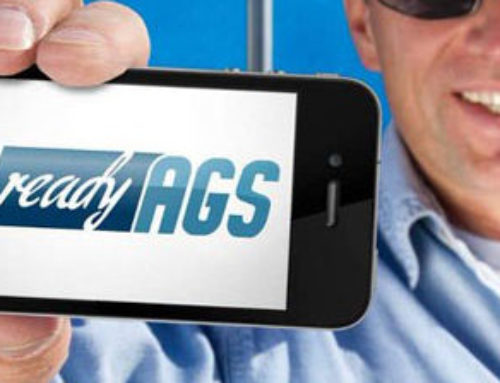 As domestic ports are working to increase efficiency, some have embraced technology to solve their most challenging pain points by improving driver turn times and their overall experience at a critical moment.
As domestic ports are working to increase efficiency, some have embraced technology to solve their most challenging pain points by improving driver turn times and their overall experience at a critical moment.
Increasing driver efficiency and satisfaction is paramount with the driver shortage hitting an all-time high, estimated to be 80,000 this year by Bob Costello, chief economist at the American Trucking Association.
To find out more about how ports are increasing driver efficiency, Ray West, President and CEO of NASCENT Technology, recently conferenced with Patrick Jefferson, Director of Gate and Yard Operations at the Port of Virginia, and Jorge Velazquez, Senior IT Manager for APM Terminals in Mobile, Alabama.
Here are three strategies that are working:
1. Use reservation systems
Jefferson said the Port of Virginia uses a reservation system, PRO-PASS, to balance the flow of trucks and keep tabs on what is going in and out of the facility. “PRO-PASS allows us to set a number of reservations throughout the course of the day and manage those reservations, so we don’t overwhelm ourselves as far as what our true capabilities are on the land side,” he said.
The PRO-PASS platform allows the Port of Virginia to housekeep the containers it expects to come to keep a level of fluidity with the trucking community. “It allows us to suppress the turn time as well because we’re not allowing the number of trucks to come in that would exceed our true capabilities within any given time period,” Jefferson said.
The Port of Virginia offers prior day reservations, which are reservations the port house keeps the night before. Prior reservations reduce the number of rehandles, but Jefferson said the port also provides same-day reservations. “Obviously, your experience is not going to be the same as that of a prior day reservation. You’ll have a longer turn time because of the number of rehandles required, but it still allows a better-than-average experience for the trucker,” he said.
The APM Terminal in Mobile, Alabama, is basing its gate capacity on a reservation system as well. That enables the port to provide advanced housekeeping, so containers are in the optimal position, which enhances drivers’ experience, Velazquez said.
2. Match gate controls with throughput
Faster gates can ease congestion, but they can expose other bottlenecks, which makes inventory accuracy critical. “As long as we have inventory in good shape, you should be able to either receive or dispatch containers in a fast way. It helps you avoid extra moves to dispatch or receive a container,” Velazquez said.
Equipment availability is another potential bottleneck. When things are running perfectly, it can increase the uptime for equipment usage and provide less down time for preventive maintenance of equipment. “That also becomes a challenge—trying to find the availability and the time to take a machine off line and do a proper PM and avoid some misuse,” Velazquez said.
Jefferson said automated gates could lead to a bottleneck. “We can completely crush our landside,” he said. “That goes back to ensuring we’re matching our number of appointments in a defined period of time and actually being able to perform so that we don’t get into a situation that emulates a free-flowing gate, overwhelming receivers and deliveries within those stacks,” he said.
3. Enhance the driver experience
Ultimately, drivers want simplicity. “They just want to go do their job, get out of the terminal, and then come back into the terminal as soon as possible. As long as we don’t have disruptions and decrease the interaction the terminal has with the driver, that introduces simplicity,” Velazquez said.
The driver experience centers on communication. “There are a number of platforms we use to engage with the trucking community and get feedback from the truckers,” Jefferson said.
Velazquez said he’d like to see the ability to send drivers push notifications. “We are very good at communicating with the trucking community, but sometimes the drivers in line at the gate just expect the best, but they’re not the ones receiving the communication. It goes to their dispatcher.” he said.
A mobile app with a smart map that could show drivers where they need to go once they get thru the gate would add to the drivers’ experience and create better turn times since they would know exactly where to go next.
For more on how automated systems can work together at port terminals to increase throughput and enhance the driver experience, contact us today.


